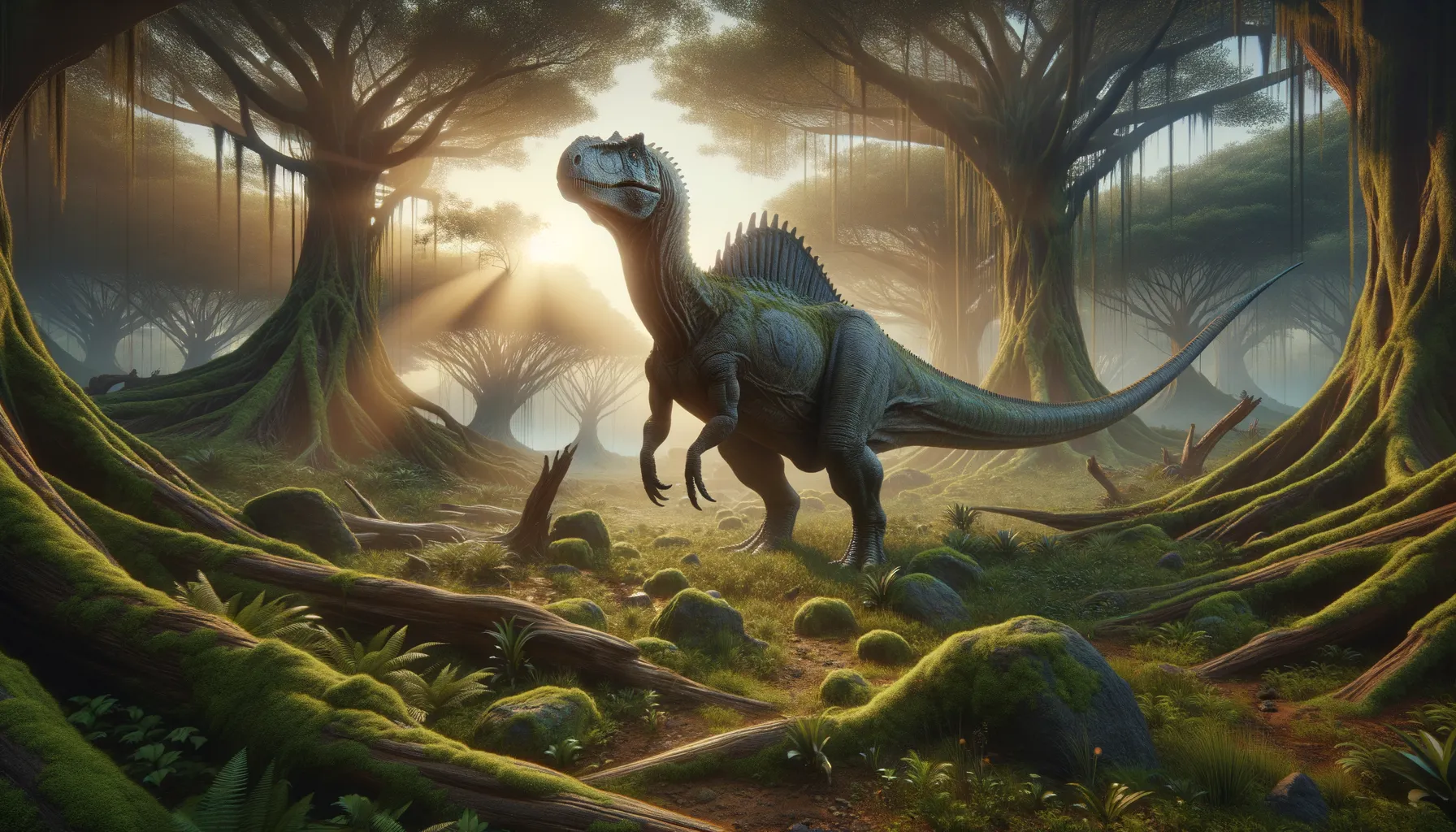
Syrmosaurus
Armored beast of the ancient past.
Period
Cretaceous
Length
About 4 meters long.
Height
Around 1.5 meters at the hips.
Weight
Approximately 1-2 tons.
Syrmosaurus was an armored herbivorous dinosaur from the Cretaceous period, primarily found in Mongolia. It is known for its bony plates that provided protection from predators. Although not the fastest dinosaur, its sturdy build allowed it to forage effectively and defend itself using its tail club. Its fossils offer significant insight into the lifestyle of ankylosaurids during its era.
Diet
Syrmosaurus was herbivorous, feeding on low-growing vegetation. It likely grazed on ferns, cycads, and other prehistoric plants available in its habitat. Its beak-like mouth was well-adapted for snapping and stripping leaves.
Hunting
Unlike carnivorous dinosaurs, Syrmosaurus did not hunt for prey. Instead, it foraged for plant material. Its slow speed made active searching for food a likely routine, traveling across regions abundant in dense vegetation.
Environmental challenges
Syrmosaurus faced various environmental challenges such as finding enough food in changing climates and avoiding large predators that roamed its habitat. Climate fluctuations affected the availability of vegetation, requiring adaptability in diet. Additionally, competition with other herbivores was common, navigating shared terrain and resources.
Speed
Moderate, with strong limbs for stable movement.
Lifespan
Likely around 20-30 years based on similar species.
First discovery
Discovered in Mongolia in 1952 by Evgeny Maleev.
Fun Facts
- Syrmosaurus was a plant-eating dinosaur that lived during the Late Cretaceous period around 90 million years ago.
- It belonged to the family of dinosaurs known as ankylosaurs, which are famous for their armored bodies.
- The name Syrmosaurus means 'running lizard', although it was more of a slow-moving creature due to its heavy armor.
- Syrmosaurus had a club-like tail, which it likely used for defense against predators.
- Its fossils were first discovered in Mongolia in the 1920s, making it an interesting find for paleontologists.
- Despite its tough armor, Syrmosaurus was a herbivore, feeding on low-lying plants and vegetation.
- The Syrmosaurus played an important role in its ecosystem, contributing to the plant life and food chain dynamics.
Growth and Development
Syrmosaurus grew steadily, with its defensive armor developing as it matured. Juveniles lacked full armor, making them more vulnerable to predators. As they aged, these dinosaurs experienced a thickening of their protective plates, increasing their chances of survival. Rapid early growth phases helped reach a size that deterred many predators quickly.
Habitat
Syrmosaurus lived in semi-arid environments with seasonal rains, promoting diverse vegetation. It inhabited areas with open forest and shrubland, allowing for effective foraging and protection. The landscape offered both food resources and shelter from predators, with herd behavior providing added security.
Interaction with other species
Syrmosaurus shared its habitat with several other dinosaur species, including predators. Defensive strategies, like forming herds, reduced predation risk. Its interaction was generally passive, except for escaping or defending against attacks. Its armoured body allowed it to coexist with larger, more aggressive species.
Natural lifespan
Its natural lifespan extended approximately 20 to 30 years.
Reproduction
Syrmosaurus likely laid eggs in nests constructed with vegetation or soil. Parental care was minimal after laying eggs, with hatchlings growing rapidly in juvenile years. Its reproductive strategy likely involved producing many offspring, compensating for high juvenile mortality rates.
Social behaviour
Syrmosaurus is believed to have been a social creature, living and moving in groups. This herd behavior was strategic, offering protection against predators through numbers. Communication within the group helped in coordinating movement and social interactions. Competition for mates and resources might have led to occasional intraspecies conflict.
Fossil locations
Fossil remains of Syrmosaurus have been predominantly found in Mongolia, within the Bayan Shireh Formation. These discoveries help piece together the ecosystem of the area during the Cretaceous period. The well-preserved nature of some fossils has provided insight into its armored anatomy and lifestyle.
